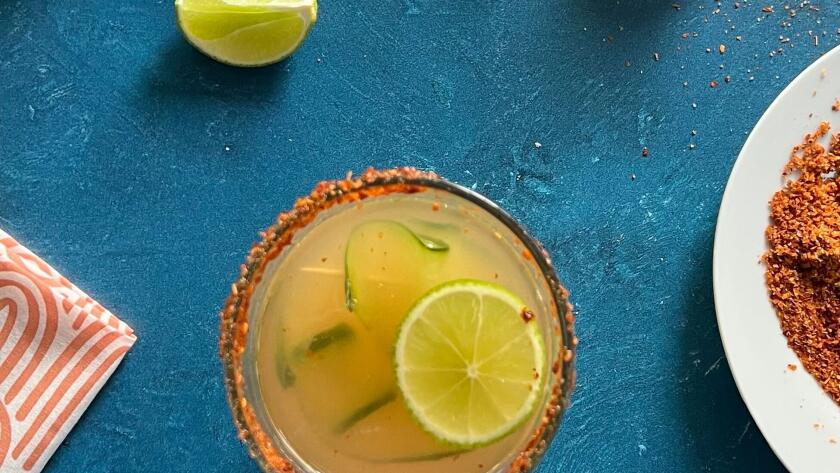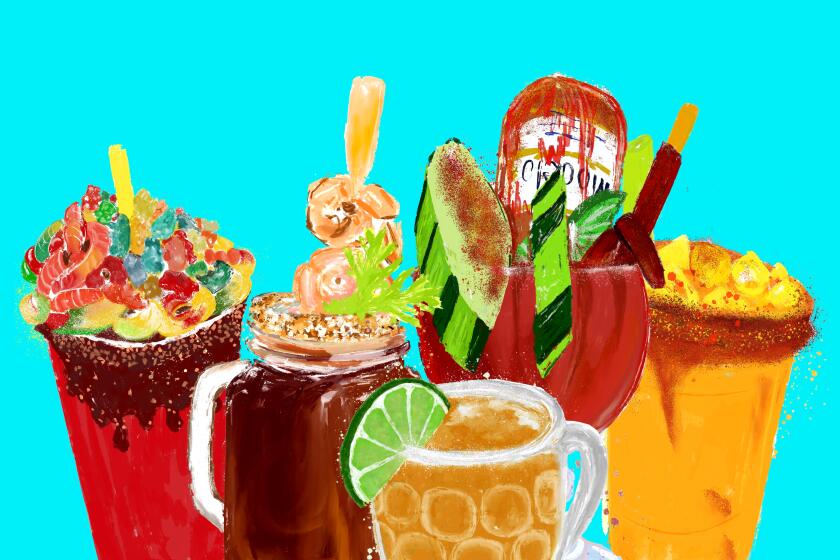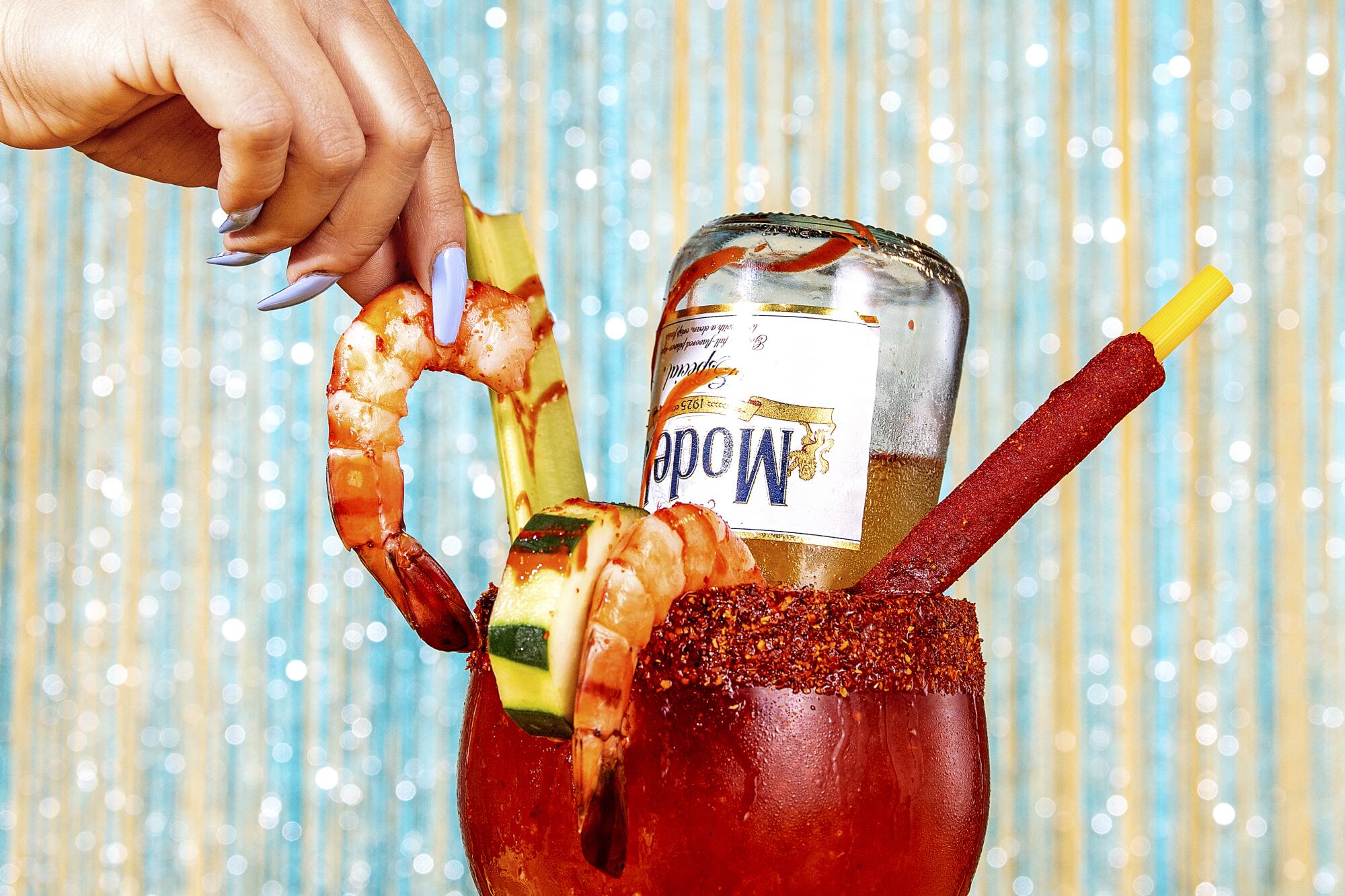
The beer cocktail from Mexico has transformed into an L.A. summer staple. But has the innovation gone too far?
The first time I experienced the revelation of a michelada cocktail, a work mate had just handed me an icy mug filled with lager, lime and savory sauces. It was the summer of 2002 in Mexico City, and with my initial sip I felt as if I had crossed a bridge.
I was working my first job out of college, reporting for an English-language news site attached to a legacy broadsheet based in the Mexican capital’s old newspaper district. Our digital enterprise — comprising young journalists from the U.K., Sweden, France, the East Coast of the U.S. and me as the lone Mexican American or pocho — was treated like the newspaper’s undesirable stepchild. On paydays, every other Friday, our “gringo” team would go out, pesos stuffed in our pockets, to nearby fondas or cantinas for long comidas.
Someone at a table said I had to try a michelada. I had never seen this drink: a light Mexican lager, like Tecate or Carta Blanca, dressed up with ice, freshly squeezed lime juice and dashes of Maggi sauce, “salsa inglesa” or Worcestershire sauce, Clamato and a picante like Valentina. It came in a salt-rimmed mug.
Under the shock of a summer rain, I took a sip and my eyes popped. My friends laughed. I instantly thought: Wow, I wonder if people back in L.A. know about this.
The once-modest beer cocktail is now everywhere and more extravagant than ever. A guide to L.A.’s best.
Flash-forward to today, and micheladas are everywhere. From flashy bars in Hollywood to the dives of Long Beach, from Whittier to San Pedro and up to San Fernando, it’s hard to pinpoint any self-respecting bar that does not offer one. There’s a michelada festival at the Santa Anita race track and micheladas flow at Dodger Stadium.
Want to make a michelada at home? This grapefruit-flavored IPA-Lada, adapted from the Palomada michelada served at Whittier’s Colonia Publica, is a great way to start.
In recent years, the drink has rocketed into its extremes, egged on by the impulses of social media. Micheladas now frequently overflow with blooms of cooked shrimp, rimmed in sweet-and-sour sauces and sesame seeds, or they come to the table drowning in fruit chunks or even gummy bears. It’s a race to see how over the top the “miche” can be pushed.
Sometimes micheladas are spiked with tequila or mezcal, cranking up the sense of risk; or served in a carved-out pineapple or coconut. And elaborate nonalcoholic “michelaguas,” made with aguas frescas, turn up more and more at night markets and swap meets.
Lime and salt are a gateway to the culture.
Canned michelada or chelada (lime and salt only) products are clawing their way toward the top of the niche beer market, from both major beer brands like Anheuser-Busch’s Bud Light and local craft breweries like Golden Road and its Guava Chelada Cart.
While its canned counterparts are a sign of the drink’s mass popularity, the michelada captures its most ardent fans as an experience. Anyone will tell you that there’s nothing like kicking back at a backyard carne asada or near a shore on a hot day with a plate of seafood and a homemade miche. I learned long ago to always have a jar of the chile-fruit condiment chamoy and a bottle of Clamato handy in my pantry.
How did we get here? Who made the miche first? And, more crucially, has the michelada craze gotten out of hand?
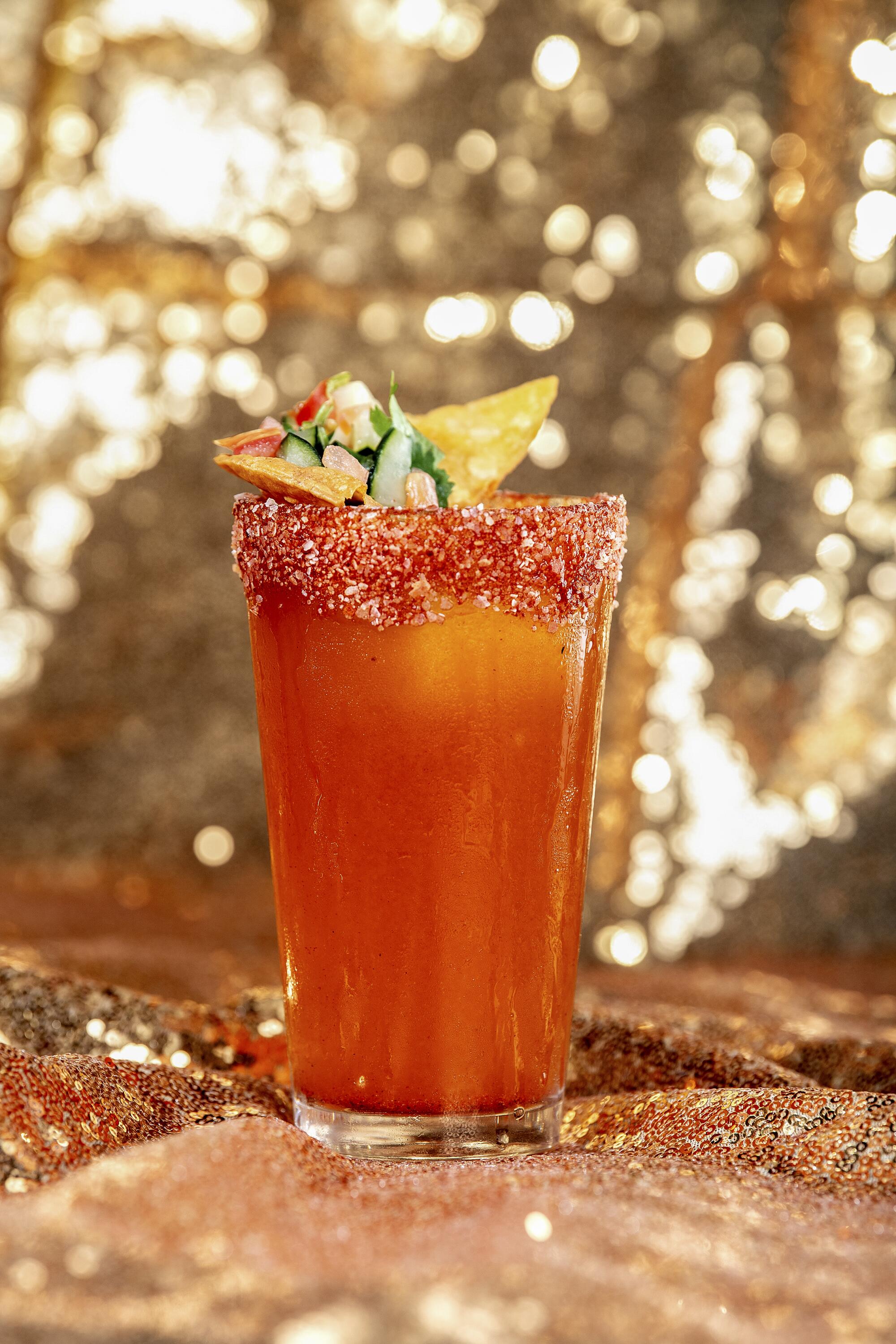
The most repeated michelada creation tale traces to the late 1970s and a country club in San Luis Potosí in central Mexico. A member of the Club Deportivo Potosino named Michel Espér allegedly asked the fellow tending bar to put lime and ice in his beer. The hot weather made it sound like a good idea, the story goes.
An administrator for the club’s Facebook account maintained the veracity of the story when contacted online. Multiple YouTube videos and newspaper clippings repeat the tale to this day. But some experts argue that the story is a culinary urban legend.
Food writer Alonso Ruvalcaba, a street-food expert and author of the book “24 Horas de Comida en la Ciudad de México,” says the likely truth is that the drink emerged organically during Mexico’s modern period.
“It seems pretty irrelevant to me, sort of like a roasted chicken,” Ruvalcaba says. “At one point or another, it was just going to happen. Someone somewhere was going to decide to start putting acids into a beer.”
Yet the michelada’s emergence goes past the realm of coincidence.
From the chelada to the seafood-packed botana, a primer on how to spot your miches
When I tried my first michelada, I was astonished because the drink tasted so Mexican. People invariably use this phrase to describe a flavor palate that feels made from a sense of play, and involves hot and cool. The michelada is easy to make but tastes like a lot of work went into it, fortuitous yet also sophisticated — like some of Mexico’s great dishes, come to think of it.
Lime and salt are a gateway to the culture, and a crucial element to the story of its evolution across many places at once. In Oaxaca, for example, some cantinas refer to the mixture of beer, lime and salt as a suero, or serum.
“When I was growing up in Mexico, the traditional was just a frozen glass mug, ice cubes, and freshly squeezed lime juice at the bottom, and a rim with lime juice and salt,” says Pati Jinich, cookbook author and host of the award-winning PBS show “Pati’s Mexican Table.” The addition of any savory sauce turned the drink into a michelada preparada, she says.
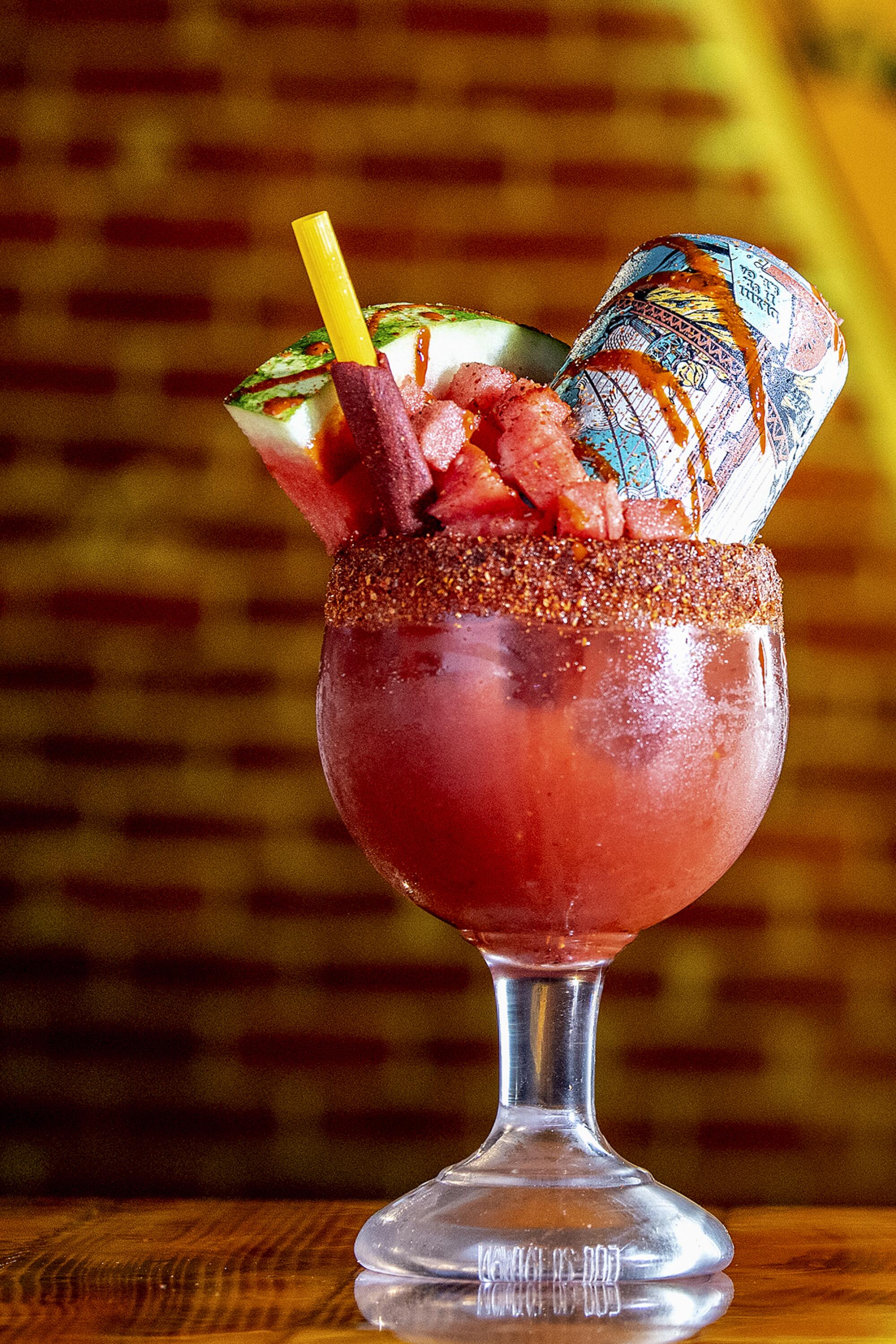
“The preparada was a mishmash of things added to the lime juice. Dashes of all the savory, spicy, filled with umami,” Jinich says. “Some people add soy sauce, along with Worcestershire sauce and Maggi sauce.”
Over time, with the cocktail becoming more popular in major centers like Mexico City, the definitions shifted. Now the conventional terms used are “chelada” for the lime-and-salt version, and “michelada” for anything more elaborate, though some menus hold to the original delineation.
“For decades, those were the two versions,” Jinich says. “And increasingly micheladas started getting crazier, and this started happening at the same time as micheladas became more popular north of the border.”
Efforts to commercialize the cocktail in the U.S. were dizzying in their speed. The first commercially canned michelada product, the Clamato Chelada by Bud Light, appeared nationally in 2008. Ever since, major and craft brew labels have developed their own canned michelada beers, leading to an arms-race-style battle over which companies can innovate quickest.
The Modelo beer brand is currently leading in the space, with its Modelo Chelada product and a full flavor lineup that includes Limon y Sal, Mango y Chile, Piña Picante and most recently, one dubbed Naranja Picosa.
‘Let’s see who can make the most disgusting gomichela imaginable.’
The company says its chelada canned drinks now account for more than 50% of the chelada submarket, according to industry figures updated in July.
Greg Gallagher, vice president for marketing for Modelo, notes that the company’s numbers suggest 40% of consumers for canned michelada are non-Hispanic. This is significant because micheladas have not yet been directly marketed to consumers in English, Gallagher says.
“It’s even been more successful than we’d really imagined it would be,” he says. “It’s like this intersection of the mainstreaming of Mexican culture, and separately there’s this flavor-seeking behavior, even outside of beverages. Consumers are looking for new flavors, more flavors, and micheladas exist right in the intersection of all that.”
Restaurants all over the United States serve micheladas, but its capital outside of Mexico, you might say, is right here in L.A. The first iterations of micheladas probably were seen at cantinas in East, South and Southeast Los Angeles, as well as at restaurants established by immigrants who arrived in the late 1970s or early 1980s.
Fernando Lopez, co-owner of the 2021 Gold Award winner Guelaguetza, says popularity of the Guelaguetza michelada recipe eventually led him and his siblings to launch a “Michemobile,” a converted Volkswagen van meant to spread the gospel of the miche, and the packaged brand mix I Love Micheladas.
Their prepared mix now sells at Costco, part of a retail trend that includes miche mixes and foam cups prelined with salt and Tajín.
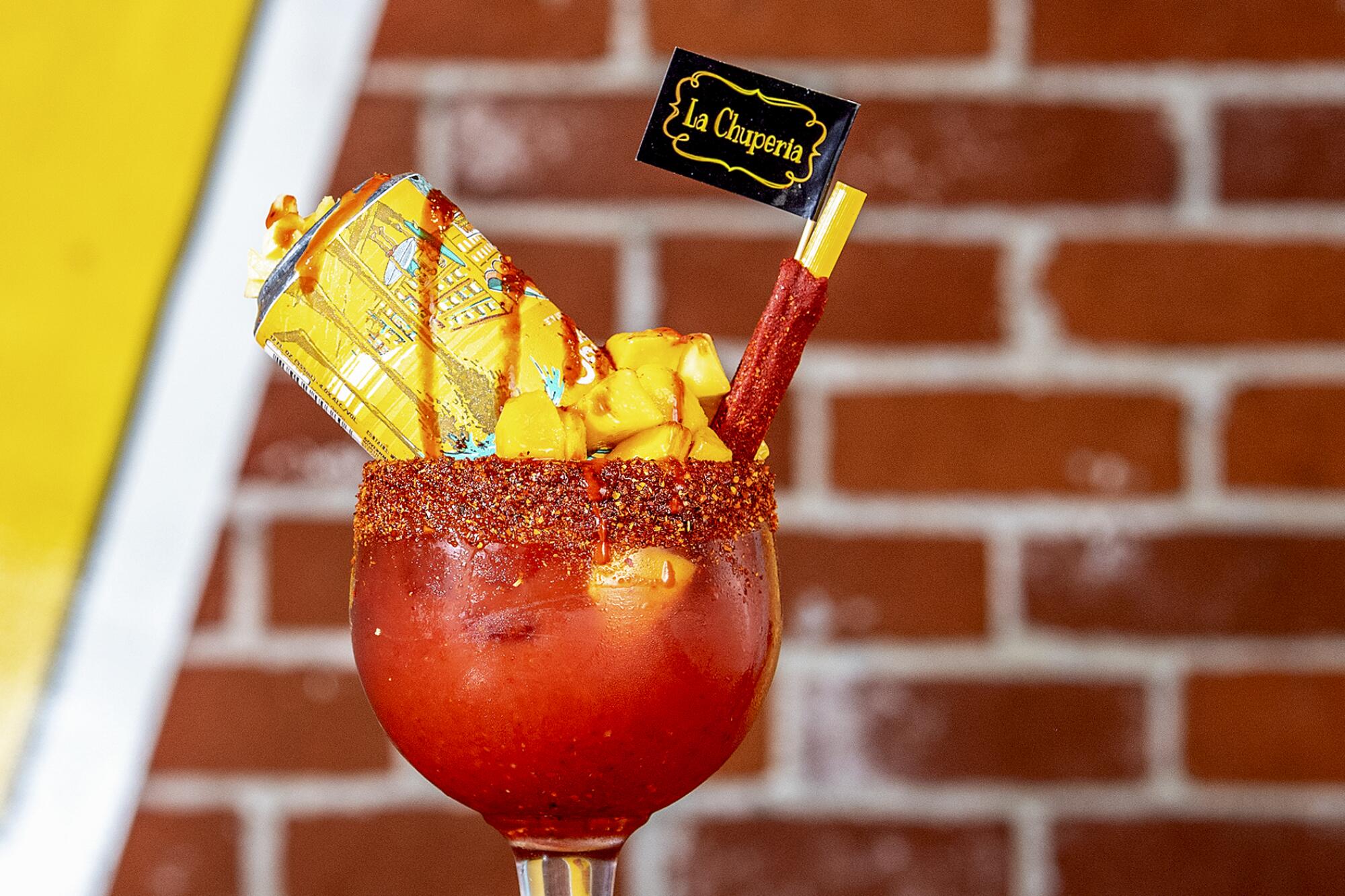
“I always tell people it’s the god-honest truth we’ve been making micheladas ... [before] any of the fancy restaurants. We didn’t see micheladas anywhere, really anywhere, up until we made the Michemobile,” Lopez says.
Around the same time, Sinaloa culture really took hold in Los Angeles, especially in Southeast L.A., where driving around it seems you can’t throw a rock without hitting at least one michelada-and-mariscos spot on any given strip. Downey, Huntington Park, Bell Gardens, Lynwood and nearby locales are blanketed in largely Sinaloa-style seafood restaurants that in the last decade or so have combined the signifiers of Western coastal Mexican seafood with over-the-top micheladas.
Micheladas in Southeast L.A. usually are jammed with shrimp and cucumber, poured into extra-tall mugs or goblets with the beer bottle itself dunked in upside down.
Separately, a whole subculture of online-order michelada vendors thrives on Instagram and Facebook, where the preferred preparation is a miche to-go topped with a platter filled with mariscos including fish and scallops, with incisions on the plastic so that the seafood juices drip down into the beer.
Boundary-busting micheladas also are booming south of the border. Naturally.
“You could see Los Angeles as a geographic appendage of Mexico, or Mexico as a geographic appendage of Los Angeles,” Ruvalcaba says.
Street markets such as La Lagunilla in Mexico City are famous for their miche vibes, where the “cubana,” another way to say “preparada,” has flourished. Michelada culture, he says, is tied to cantina culture but also student life. Gummy-focused “gomichelas” are considered an entry point for all-day beer drinking among students in both the preppy and public campus cultures in Mexico. Beer businesses known as “depósitos” or deposits in middle- and working-class districts allow backroom drinking — which translates to full-blown speakeasies serving exuberant micheladas at all hours of the day.
“The gomichela is where the separation happens, where you just go completely out of pocket,” Ruvalcaba says. “And you just start doing whatever dumb thing occurs to you.”
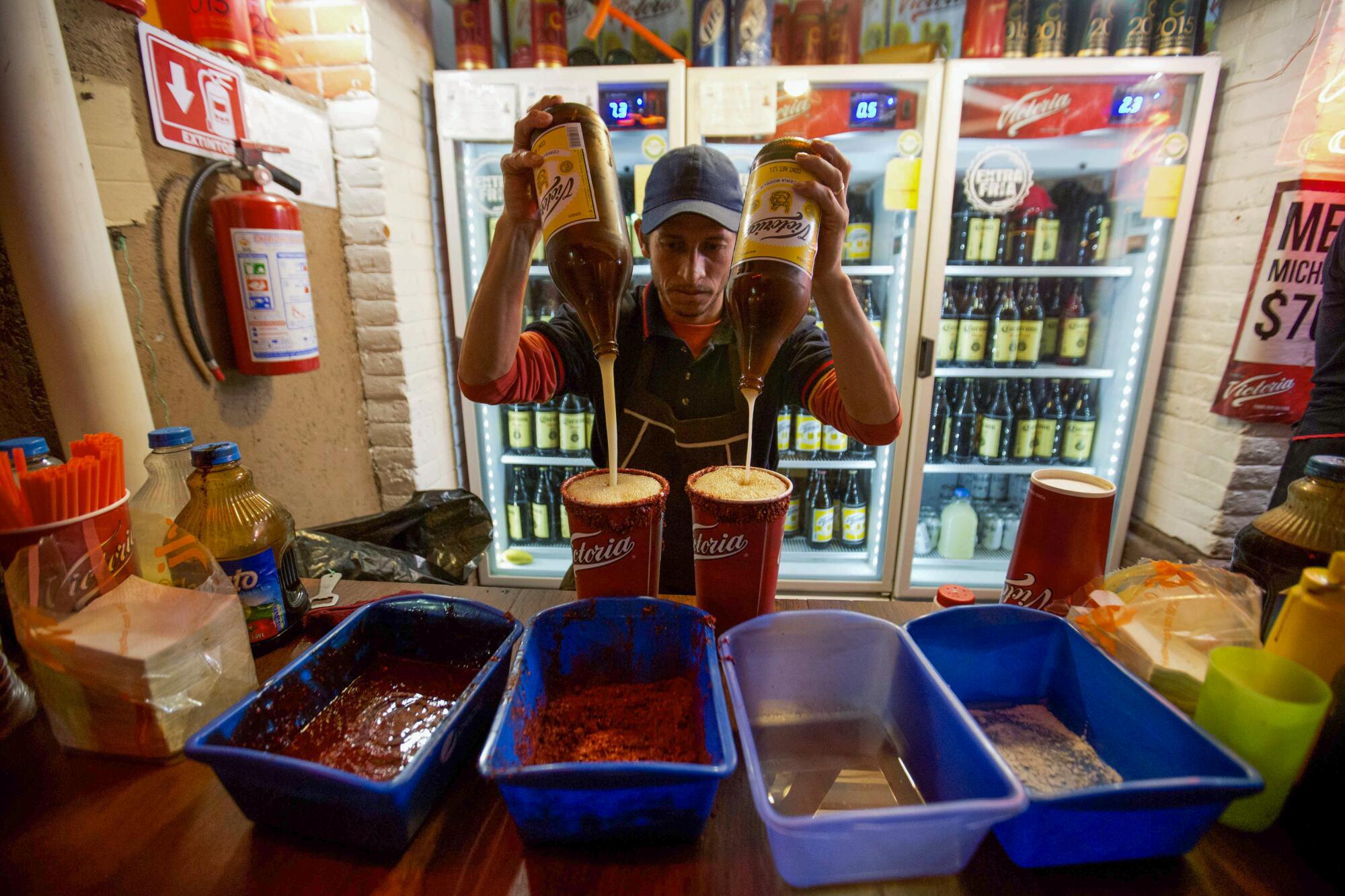
“People want to top the latest version or whatever they see on social media,” Jinich says. They “want to get more and more attention doing crazier and crazier things. I think that just exacerbates it.”
At a certain point, the flavors of an over-prepared michelada can start to drown out one another. I sometimes find myself unable to finish one whole, or I may end up asking for another beer to seek extra relief from the layers of spices. A towering gomichela can leave me with a bellyache.
How far can we reasonably expect all this to go?
“As far as it wants to go!” Ruvalcaba retorts. “I’ll be honest, I don’t go too far with the gomichelas, but I love that they exist.
“It’s a type of creative ecosystem, like, ‘Let’s see who can make the most disgusting gomichela imaginable,” he adds, laughing. “Until it ends. Until the pendulum swings in the other direction.”
For Jinich, the tornado of innovation that is Mexico’s preferred beer cocktail makes great sense for the arc of culinary history. A michelada is indeed so Mexican, she says.
“Like tacos, enchiladas, tostadas, our food is so accessible and customizable. You can play with it, and people can take their own spins,” the television host says. “And I think of course it’s super refreshing, and playful and inviting. And there’s no limit with how you can play, concocting something with a beer.”
More to Read
Eat your way across L.A.
Get our weekly Tasting Notes newsletter for reviews, news and more.
You may occasionally receive promotional content from the Los Angeles Times.


